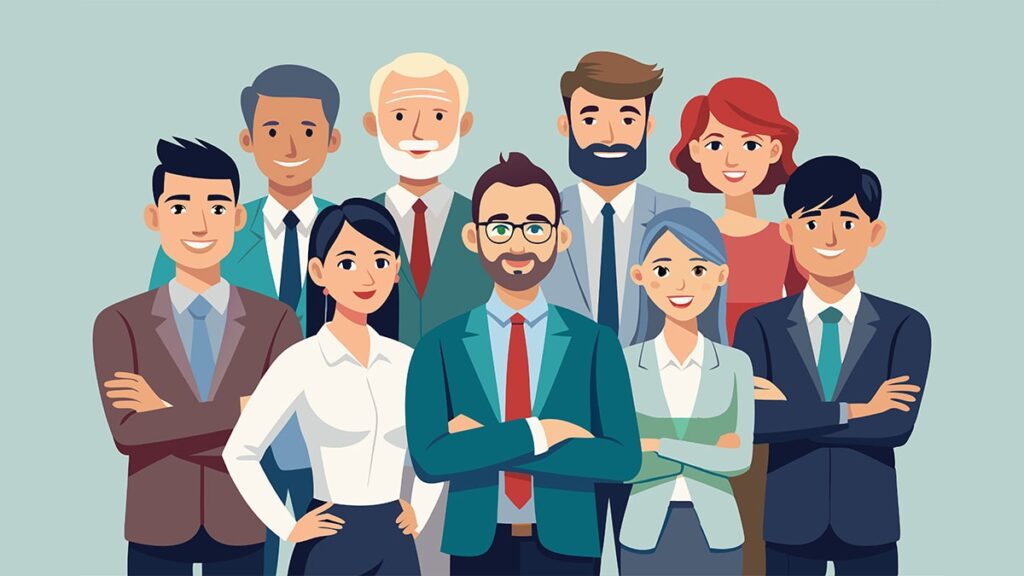In today’s evolving workplace, managing employee relations has taken on new dimensions, especially when it involves a multigenerational workforce. With five generations now commonly working side by side—Traditionalists, Baby Boomers, Generation X, Millennials, and Generation Z—each brings distinct values, communication styles, and work preferences. As an HR professional, understanding and addressing these differences becomes essential for building a cohesive and collaborative workplace.
Understanding Generational Differences
The first step in effectively managing a multigenerational workforce is to understand the core characteristics and motivators of each generation. For example, Traditionalists and Baby Boomers often prefer structure, value loyalty, and bring a wealth of experience to the table. Meanwhile, Millennials and Gen Z typically prioritize flexibility, work-life balance, and digital fluency. Recognizing these nuances enables you to approach employee relations with a more tailored, respectful perspective.
To make this approach successful, consider surveying your team members to better understand their preferences and professional aspirations. Listening actively to each group will not only clarify what they value most at work but also allow you to address concerns proactively.
Encouraging Open Communication
Open communication is the backbone of any healthy employee relationship. In a multigenerational environment, fostering a culture of communication means encouraging employees to openly share their thoughts, experiences, and expectations. Often, misunderstandings stem from assumptions about other generations, so it’s essential to create an environment where people feel comfortable addressing these assumptions.
One strategy is to establish regular team check-ins and feedback sessions. These can be informal gatherings where each employee has a chance to voice concerns, share ideas, and discuss any challenges they face. By promoting transparency, you not only ease potential tensions but also encourage mutual respect among employees, which strengthens intergenerational bonds.
Tailoring Your Approach to Recognition and Rewards
One-size-fits-all recognition systems often fall short in multigenerational workplaces. For instance, Baby Boomers may appreciate formal recognition for their hard work, while Millennials and Gen Z may prefer regular, informal feedback and rewards. By offering a flexible approach to rewards and recognition, you can ensure each employee feels valued in a way that aligns with their preferences.
Consider implementing a personalized recognition program where employees can select rewards that resonate with them. Whether it’s additional time off, public acknowledgment, or professional development opportunities, giving people a choice can significantly impact their job satisfaction and productivity.
Promoting Cross-Generational Collaboration
Creating opportunities for cross-generational collaboration fosters teamwork and helps dispel stereotypes. Many companies find success by implementing mentorship programs, pairing older employees with younger ones to share skills and insights. For example, a Traditionalist may offer a Millennial advice on long-term career development, while a Gen Z team member could share tips on leveraging social media for brand-building.
These relationships can be mutually beneficial and may even boost morale by promoting shared goals and learning experiences. Additionally, encouraging team projects with mixed-age groups can be a great way to foster collaboration. It can also help break down any pre-existing silos or biases that might exist between generations.
Adapting to Diverse Communication Preferences
When it comes to communication, each generation has its preferences. Gen Xers may appreciate a quick email, while Millennials and Gen Z may lean toward instant messaging platforms. By offering a variety of communication tools, such as Slack, email, and video conferencing, you can ensure everyone has a comfortable way to communicate.
Encourage flexibility in these methods to accommodate everyone. Providing training on communication platforms can help employees feel confident in using them, especially if they are unfamiliar. This inclusivity reinforces the message that all communication styles are valued and respected.
Supporting Lifelong Learning and Career Development
Generations now seek ongoing growth, and investing in professional development can bridge generational gaps. While younger employees may be looking for advanced skills or tech training, more experienced workers might value refresher courses or workshops on new industry trends. Offering diverse training programs shows that your organization supports everyone’s career growth, which boosts engagement and encourages loyalty across age groups.
One way to support development is to introduce a continuous learning culture, where employees of all ages can participate in skill-sharing workshops or on-the-job learning opportunities. For example, Gen Z employees might lead a workshop on digital tools, while Boomers could share industry knowledge in return.
Emphasizing Respect and Empathy
Ultimately, promoting respect and empathy among all employees is crucial for managing a multigenerational team. By encouraging an inclusive work culture where everyone feels heard and valued, you help prevent biases and misunderstandings that can arise from generational differences. When respect is at the core of your workplace culture, employees are more likely to appreciate the diversity of perspectives.
Encouraging empathy-driven initiatives, like diversity and inclusion workshops or “lunch-and-learn” sessions, can provide opportunities for employees to understand each other better. These initiatives help team members connect on a deeper level, fostering a sense of unity and common purpose.
Conclusion
Managing employee relations in a multigenerational workforce requires a proactive and flexible approach. By recognizing and embracing generational differences, fostering open communication, and promoting respect and collaboration, you can create a workplace that is both productive and harmonious. The goal is to turn generational diversity into an asset, allowing each employee to bring their unique strengths to the table. When you build a culture that values everyone, regardless of age, you create a foundation for a thriving, cohesive team that drives your organization forward.

